TABLE OF CONTENTS
Cannabis concentrates & extracts allow you to experience a higher potency compared to smoking flower. Ounce for ounce, marijuana concentrates have a far greater proportion of cannabinoids and terpenes than raw cannabis flowers. They can be consumed in many ways.
Whether you’re a newbie or a seasoned user, our guide can help you find the right extract for you.
What Are Cannabis Concentrates & Extracts?
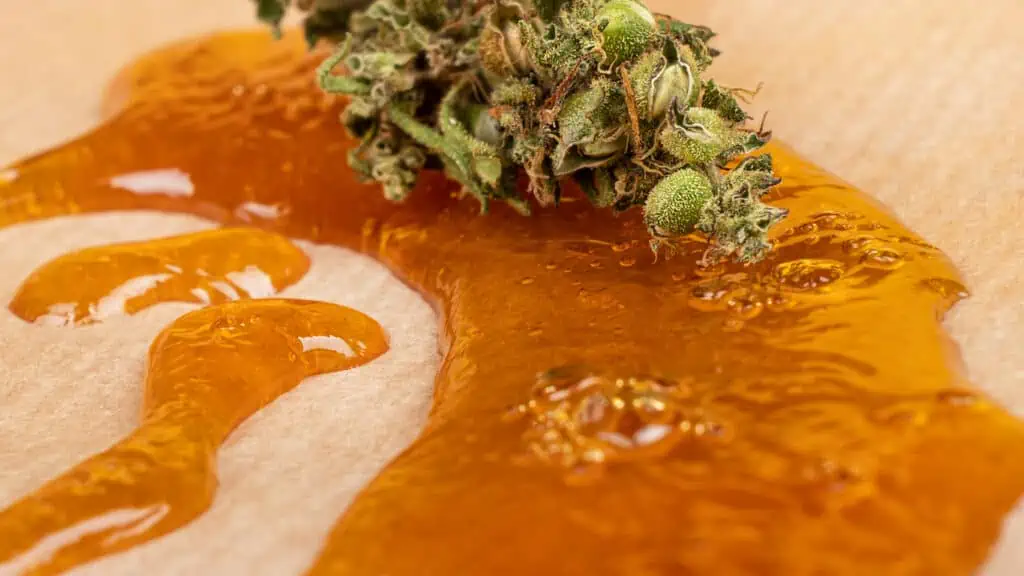
Cannabis concentrates are concentrated forms of the plant’s trichomes, which contain active ingredients such as cannabinoids and terpenes. As a result, the concentrates are much more potent than cannabis flower buds.
Concentrates come in a variety of colors, consistencies, textures, and potencies, depending on the starting material and extraction process.
Extracts refer to concentrates made using solvents.
The most popular chemicals used for solvent-based concentrates are butane, ethanol and CO2.
Solvent-Based Extracts
Solvent-based extractions are made with chemical compounds such as butane, carbon dioxide, ethanol, or propane. They are used to dissolve the plant and carefully strip out the cannabinoids and terpenes.
Shatter
Shatter is one of the most popular extracts available. It has a glass-like, translucent, and amber appearance. Its consistency ranges from brittle to sappy.
These popular concentrates are usually made with harsh solvents like butane. These products are best created in modern MIP facilities with established safety measures in practice.
While shatter, wax, and other concentrates can be made at home, the process can be dangerous because of the solvents and heat used.
Unlike hash and moon rocks (and sometimes hash oil), shatter and wax are consumed using a dab rig (a bong-like apparatus used for concentrates) or another dabbing device.
Wax
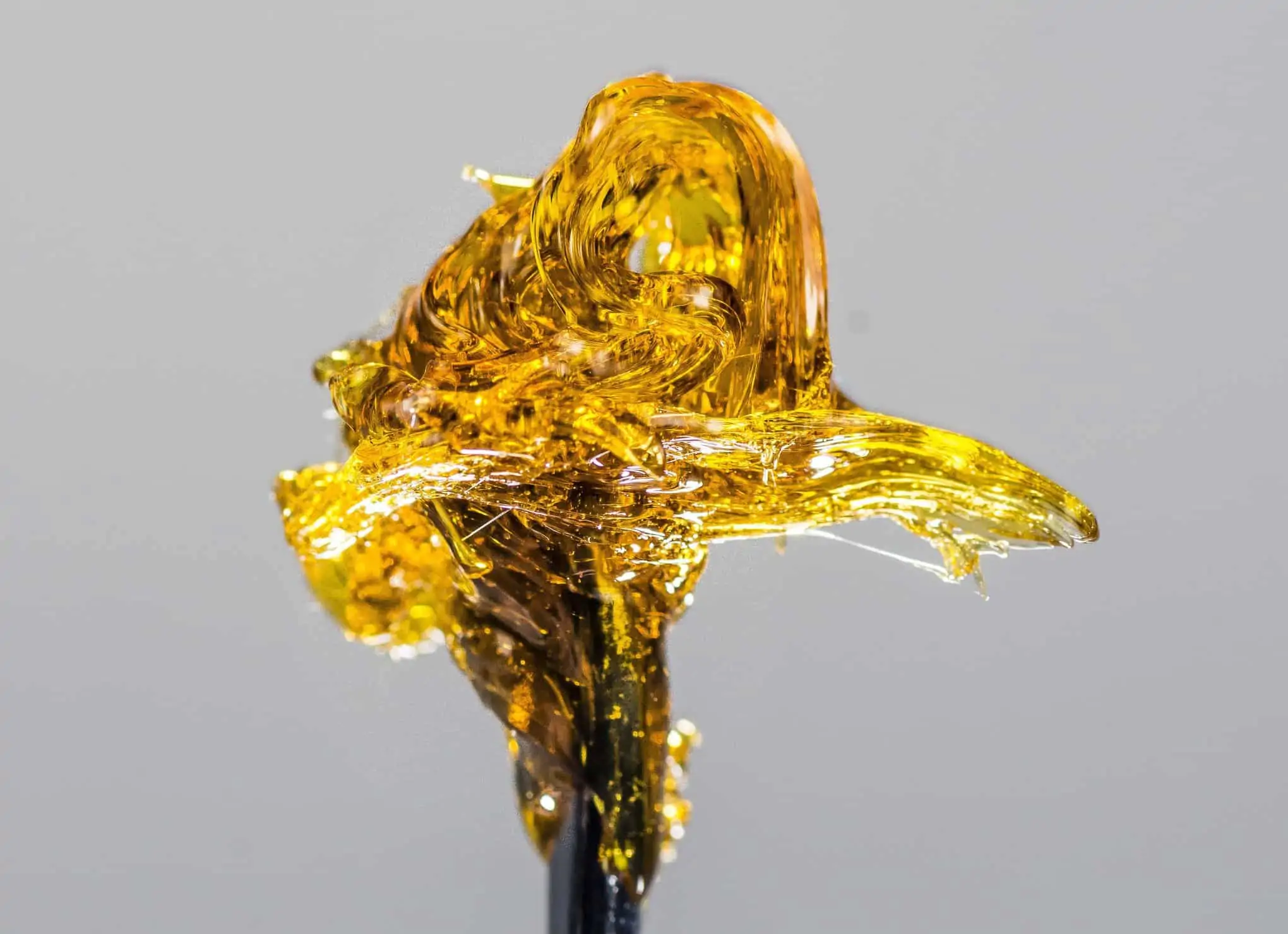
Cannabis wax, is very similar to shatter but has a gooier texture. It is made using hydrocarbons and has a waxy consistency. It has a light and opaque color.
Live Resin
Made from flash-frozen cannabis buds, live resin has a higher concentration of terpenes than most other extracts. It has a golden yellow color and a sticky consistency.
Live Resin can be dated back to 2012-2013 when a team of Colorado growers pioneered the extraction process. As briefly mentioned before, the process begins by flash freezing fresh cannabis, by placing it in a freezer with dry ice or by being slowly dipped in liquid nitrogen.
The plant matter is then kept frozen until it is ready for extraction, which usually takes place within 36 hours. Live resin is then extracted using a process that is similar to the ones used to make other extracts. The precious plant material is ran through solvent which is then vaporized when the product is finally consumed.
The main difference in this process when compared to the process used for making other concentrates, is that the solvent is cooled down for extraction. The final product is then expelled of solvents at a much lower temperature than with other concentrates.
Distillate
Cannabis distillate refers to an odorless and flavorless oil that has a single cannabinoid, THC or CBD, without any additional terpenes. Distillate can be made with ethanol or hydrocarbons. It is found in edibles, capsules, tinctures, and vape cartridges.
Budder
Budder is a marijuana concentrate that looks like butter, but not just any butter – peanut butter. The butane extraction method is used in this case. Cannabis processors use a whipping technique during extraction to create the creamy consistency.
Hash Oil
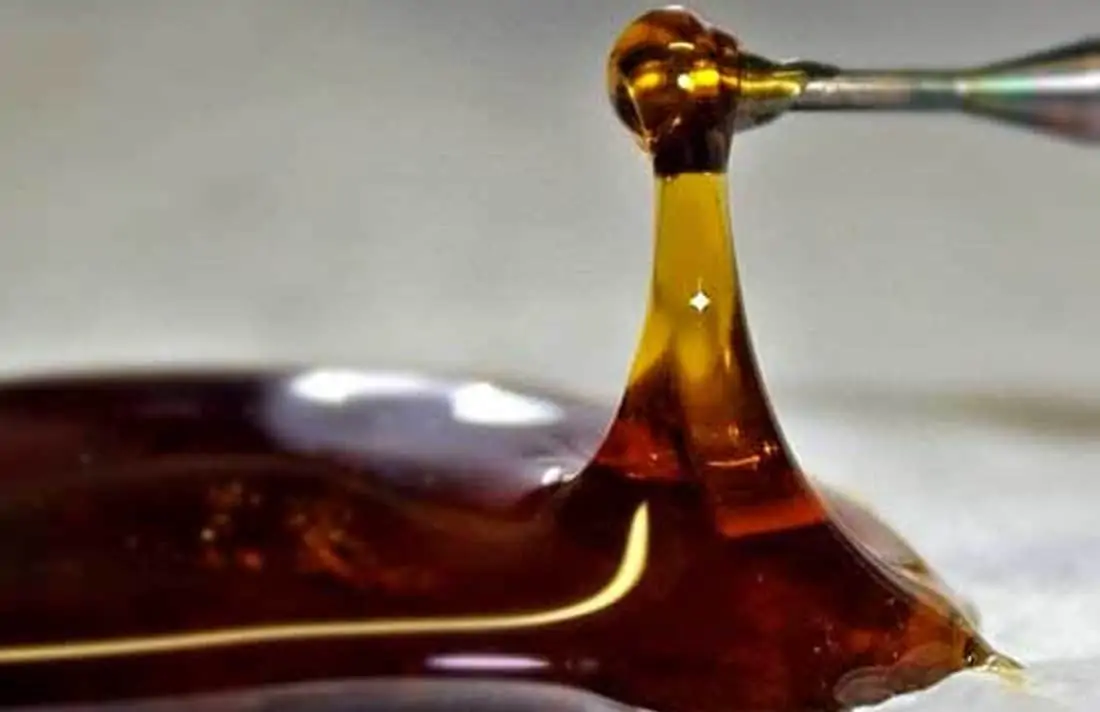
Hash oil is also popular, but it is usually more potent than other extracts. Some people include hash oil in their edibles and topicals for high potency. It can be used in a vaporizeror vape cartridge
The color of the oil can vary depending on the extraction method or purity, but most commonly it’s a golden amber color. Hash oil is made with either cannabis flower or hash.
Making hash oil involves using solvent extraction methods, utilizing one of a wide variety of solvents. The potency and versatility of this concentrate makes it very popular.
Solventless Concentrates
Solventless concentrates are made without the use of harsh chemical solvents. Instead, a range of agitation techniques or methods using heat and pressure break apart or melt the cannabis trichomes.
Rosin
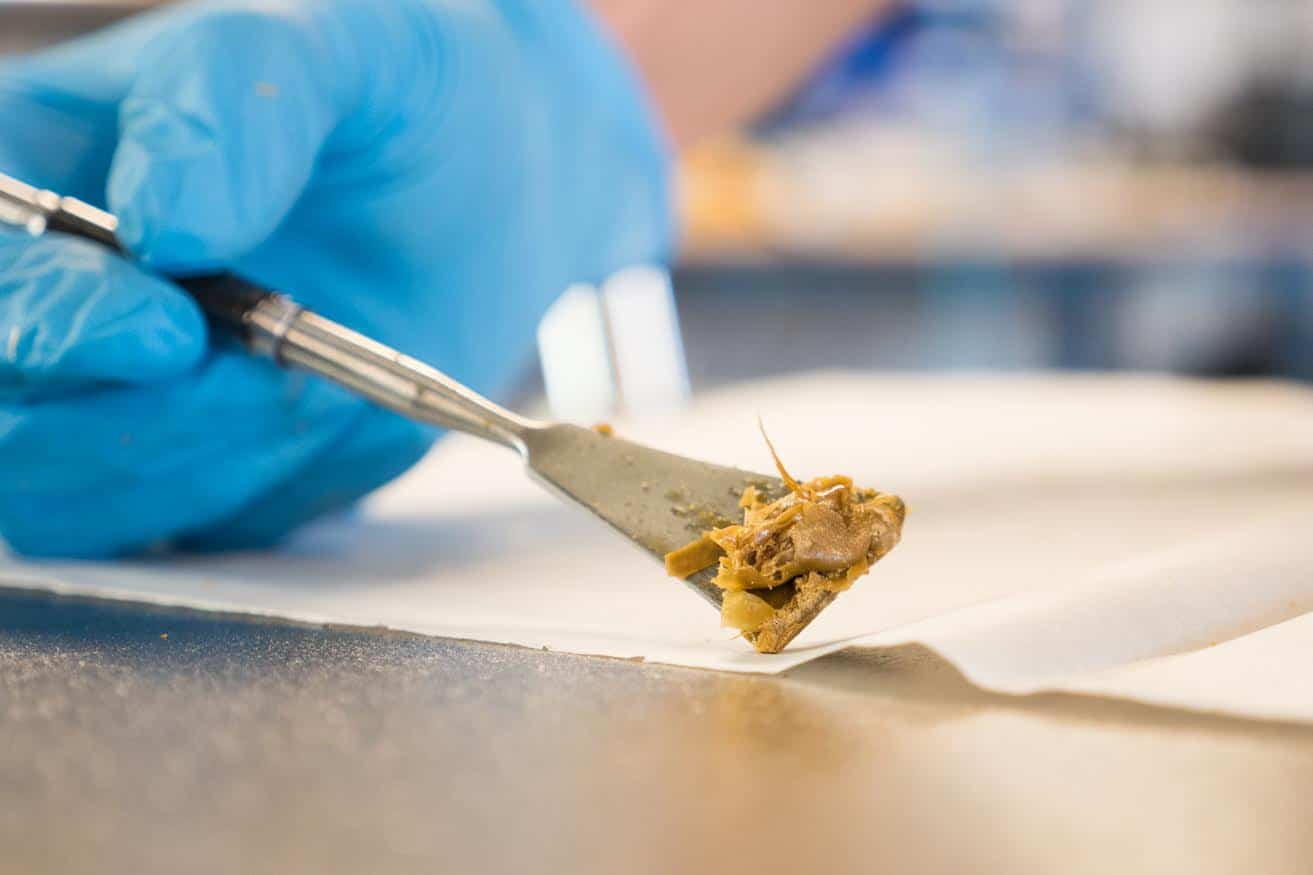
Cannabis rosin has a viscous consistency and is made by squeezing raw material such as flower or kief/hash with heat and pressure. It can be easily made at home with a hair straightener and some parchment paper.
You can make rosin with either cannabis flowers or hash. From this, the person doing the extraction employs heat and pressure to create a rich, potent hash oil.
Most of the rosin made for sale in dispensaries is produced in large quantities using sophisticated industrial equipment, but many people make it at home using simple household devices and materials.
Many people favor rosin because it doesn’t use harsh solvents, which result in an extract that contains zero residual solvents.
You can create homemade rosin with an adjustable flat iron or other heat press, cannabis flower or hash, nonstick parchment paper cut into 4- by 8-inch strips, a collection device (dab tool; small, sharp knife; or razor blade), and pieces of 25u micron screen.
By wrapping .25- to .50-gram pieces of flower or piece of hash in a 25u micron screen and pressing it flat, you then place it on a piece of parchment paper and fold the paper over, enveloping the screen and its contents.
Then, you apply pressure for 3 to 5 second with the flat iron. Carefully apply firm pressure for 4 to 6 seconds, then unfold the parchment paper and remove the screen and its contents, being careful to leave all of the rosin oil on the paper, which you then scrape off and gather with the collection tool. Repeat this process until you have the desired amount of rosin.
Lower iron temperatures (250 to 300 degrees Fahrenheit) will result in less rosin but a more flavorful terpene experience than rosin created with the iron set at a higher temperature (300 to 335 degrees Fahrenheit), which has higher yield but less flavor.
Rosin is aesthetically difficult to distinguish from sap or shatter. But, there are differences.
Rosin has no residual solvents because these will usually remain behind after the extraction process that involves propane or butane. Even though, you may be using butane at home the process does not have to be risky or dangerous. You can do so safely.
Live Rosin
Live rosin is just like rosin except that it is made with flash-frozen material to preserve the terpenes in the plant.
Kief
Kief has a dust-like appearance. It is the accumulation of cannabis trichomes that can be collected in a grinder or using dry sifting techniques.
Hash
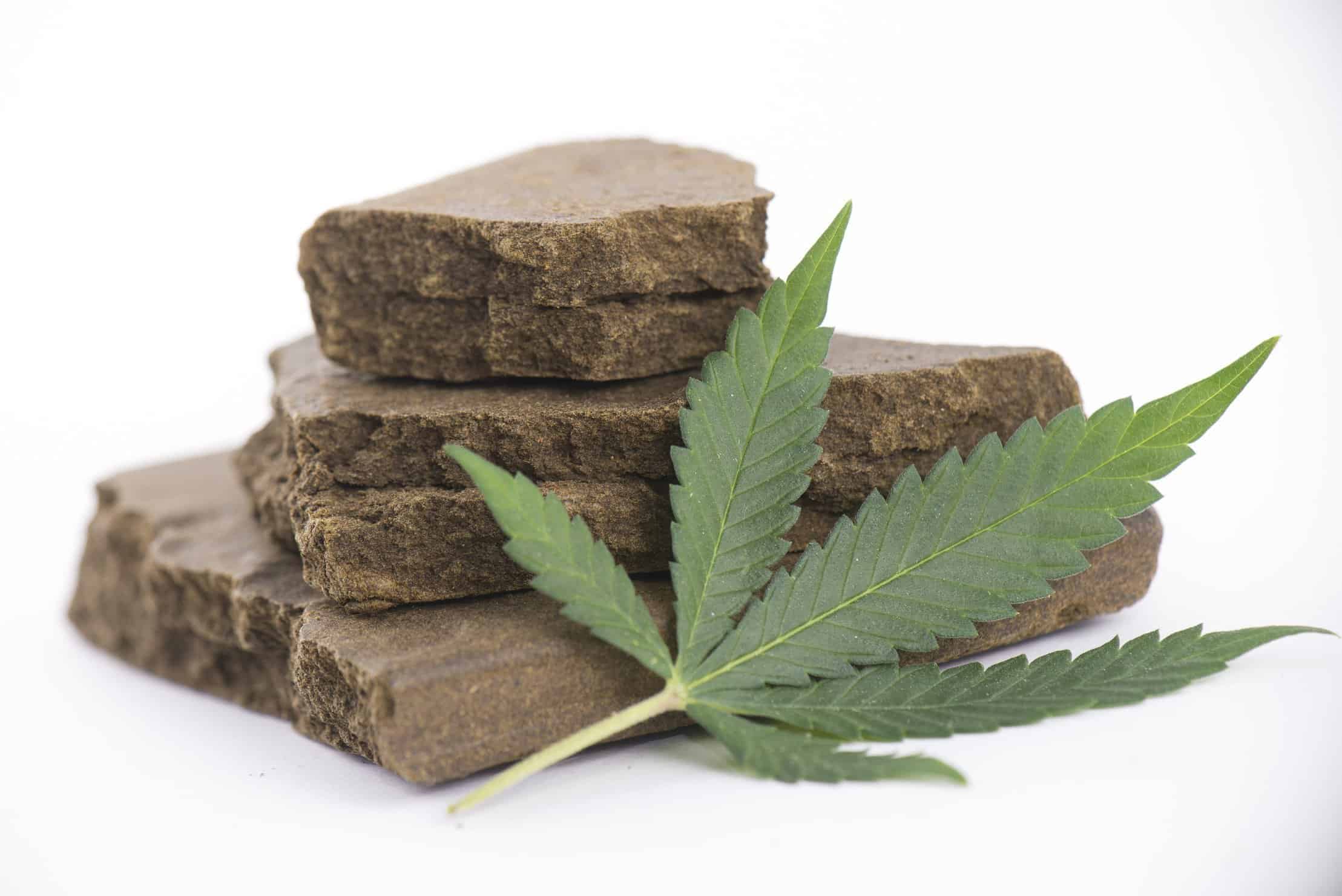
Hash refers to the collection of kief that is compressed into a ball or slab.
Hashish, or “hash” as it is commonly called, is the oldest cannabis concentrate and has a history of use that spans thousands of years.
The original form of hash was “finger hash,” which is created at the time cannabis plants are harvested by rubbing human hands on the sticky, trichome-covered buds to collect a thick, sticky, sap-like residue that the plant harvesters roll into balls rich in THC (commonly 40-50 percent).
Bubble Hash
Bubble hash, also known as water hash, has a crumbly and dry consistency. It is made using an ice water agitation technique and screen filtration.
Either dried flower or freshly harvested flower will work to make bubble hash. When using fresh flower, the resulting hash is sometimes referred to as “live hash.” Some people believe that the live hash terpene experience—the aroma and flavor of the hash—is superior to that of hash created with dried flower.
Bubble hash remains one of the easiest and safest cannabis concentrates to make. The resulting hash can either be smoked by itself or combined with flower in a joint or as a bowl topper. It can also be used in making a tarantula joint. It adds a potent kick when smoked.
Moon Rocks
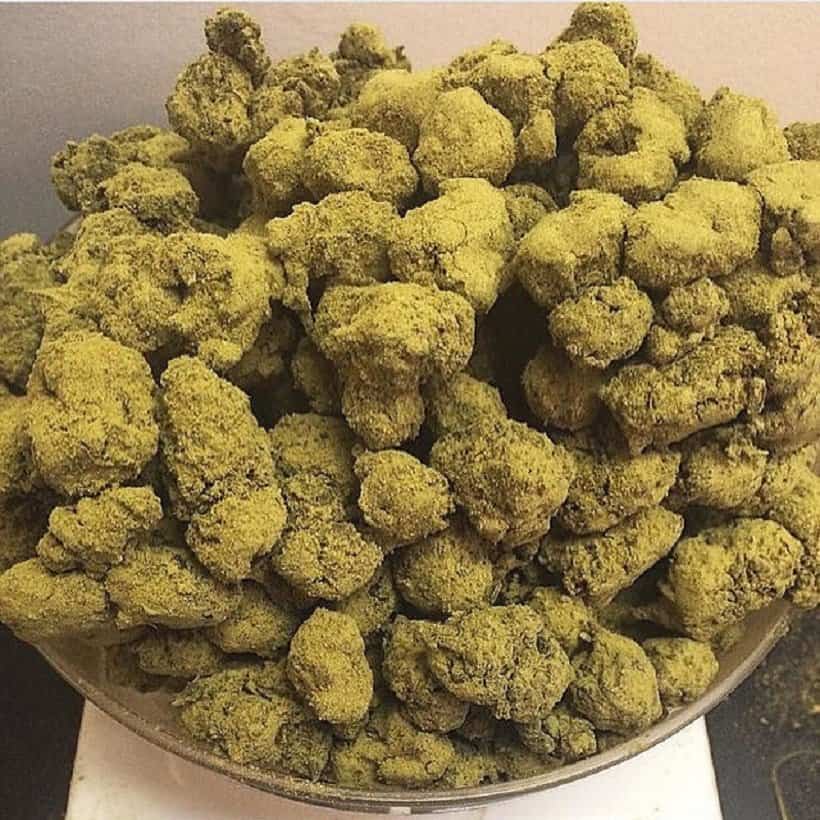
Moon rocks fall into the cannabis concentrates category and are easy to make if you have the necessary ingredients. They consist of prime cannabis flowers, hash oil, and kief (the THC-rich, trichome-laden particles that collect in the bottom trap of many cannabis grinders).
To create moon rocks, you take cannabis flower and cover it in cannabis oil, making sure you completely saturate the flower. Then, you roll the oily flower in kief until it has a thick coating. The resulting coated flowers are known in the industry as moon rocks, although some companies opt to create their own names for this product.
Moon rocks are smoked, usually in a pipe. While the hash oil may result in some initial bubbling, the moon rocks will soon smoke consistently and result in a potent rush.
The overall effect will depend largely on the type of flower used (indica or sativa), as well as the sour material used to create the oil and kief. Moon rocks are fun to both consume and create, and they make a nice change of pace over more traditional concentrates.
How to Consume Marijuana Concentrates and Extracts
Cannabis flower has THC levels between 10 and 25%, while concentrate levels can be between 50 to nearly 100%.
Dabbing is the most popular consumption method, but concentrates can also be found in vape carts, tinctures, edibles, and topicals.
1. Pipes and Joints
Cannabis extracts and concentrates can be easily added on top of packed bowls of cannabis or inside/outside of joints and blunts to give you an extra dose of potency. Add kief on top of bowls or gently heat cannabis wax to make it easier to add inside or outside of the joint.
2. Dabbing
One of the best ways to enjoy cannabis concentrates is with a traditional dab rig or an e-nail. Dab rigs are usually made of borosilicate glass and look like a bong. However, instead of a bowl piece, it has a nail that you heat up with a blowtorch. Then you apply the dab to the nail surface for vaporization. Water can go inside the rig to filter the vapor.
E-nails are more convenient and efficient ways to dab cannabis concentrates. They have a temperature control box and coil that keeps the nail at a specific temperature without having to use a blowtorch.
Using an oil/dab rig, you will be able to smoke the wax dabs that you have extracted or purchased. What is anoil/dab rig? Well, it is a water pipe usually made of borosilicate glass that you can modify by adding certain accessories, but in most cases, you would add a nail to dab the extracts.
Pro tip: Don't have a dab rig yet? That's okay. Check out our blog resource on how to make a homemade dab rigusing supplies you already have around the house.
Dab Nail/E-Nail
The quartz or titanium nail would be attached to the water pipe's intake. Dab nails are heated with a torch or electronic heater coil (e-nail). A user places a small dab of concentrate on the surface of the heated nail to vaporize it. E-nails provide better temperature control for a consistent dab time after time..
Carb Cap
A carb cap acts like a lid on a boiling pot by restricting airflow and trapping heat so you can vaporize concentrates at a lower temperature and preserve its flavor. After you’ve heated your nail, you can cover it with the carb cap. Directional flow carb caps can be rotated to push the airflow and oil around the nail for more efficient heating. When you're ready to inhale, remove the carb cap and inhale.
Dabber
A dabber is a long and thin tool that comes with a variety of tips that allow you to scoop, cut, poke, or scrape concentrates from their storage container and onto your dab rig nail. Dabbers are usually made of glass or stainless steel.
Dab Torch
A dab torch is used to heat up the dab nail or banger. Heat-up times vary based on the dab nail material and thickness. Generally, it can take between 45 seconds to a minute to heat the nail. You must allow the nail to cool a bit before placing your dab on its surface. You can also consume concentrates without a torch.
Quartz Inserts
Quartz inserts are small dishes that are placed inside the dab nail. They can be used to keep your nail cleaner for longer and take lower temperature dabs.
You can heat the nail first and then drop the quartz insert with your dab inside or drop your insert and dab first and then slowly heat it until the concentrate begins to bubble.
How to Use a Dab Rig
Using a dab rig may seem daunting at first glance, especially the torching part, but it is super easy and safe. If you don't want to deal with torching your nail, you can invest in an electronic nail for easier dabbing.
Here are step-by-step instructions on how to use a traditional dab rig:
- Fill up the water pipe with sufficient water and then attach the nail to the pipe's intake.
- Use the torch on the quartz or titanium nail, heating it until it is red hot. Try not to overheat or the nail will be damaged.
- As soon as the nail is sufficiently heated, allow it to cool for between 20 to 30 seconds.
- Then, it is time to place a small dab on the dab nail.. For a good dab hit, you only need a small amount of dab because of its heavy concentration.
- Place your carb cap on top of the dab nail and inhale through the mouthpiece until all the vapor is gone.
- Exhale and repeat as necessary.
Pro tip: Clean your dab rig and dab tools regularly to ensure you have a flavorful experience time after time.
“
There are over 300,000 jobs in the cannabis industry. CTU trained me for one of them!

Makes $24.50 @ THC +
3. Vaporizers
Cannabis vaporizers, whether they be portable or desktop versions, allow you to add a dab of concentrate to the heating chamber, which turns it into a vapor. Then, you just inhale and enjoy. Some vaporizers can work with both dry herb and extracts.
Pre-filled vape cartridges contain cannabis oil and can screw into a 510-threaded battery or you can buy disposable vape pens that already come with a battery. Disposable vapes usually have one temperature setting.
Vaporizers can have a range of pre-set temperatures or the ability to zero in on a specific temperature degree to get the maximum level of terpenes and cannabinoids.
4. Edibles
All the edible products on dispensary shelves are made with cannabis concentrate. Enjoy the benefits of a concentrate with none of the smoke.
Edibles have a longer onset time (1 to 2 hours) and duration time of effects (6 to 8 hours). The experience will depend on your tolerance, amount consumed, metabolism, and potency of the product.
5. Topicals
Cannabis concentrates can also be made as topicals such as salves, creams, and lotions. A topical infusion can be applied directly to the affected area for relief. Topicals do not absorb into the bloodstream or cause intoxication.
Become a Cannabis Extraction Expert
Gain a complete understanding of the process by enrolling in Cannabis Training University’s (CTU) online cannabis college.
Students receive well-rounded education in cannabis extracts and concentrates:
- Introduction to cannabis extraction
- Preparing the cannabis
- Cannabis infusion and extraction processes
- Straining, filtering, and purging
- Cooking with cannabis
- Cannabis recipes
Learn from the top cannabis extraction technicians and chefs. Start making your own extracts and infusions today!
If you want to know more about other marijuana concentrates, check out the Cannabis Training University where you can enroll as a student at the leading cannabis training college!

Fred Hernandez
Fred Hernandez is a highly accomplished and versatile writer, boasting an extensive background in the cannabis industry. With an in-depth understanding of various sectors including cultivators, processors, retailers, and brands, Fred's expertise spans across the entire cannabis landscape. As a prominent contributor to CTU, he consistently delivers insightful articles exploring the latest developments, news, and regulations shaping the cannabis industry. Whether it's delving into the intricacies of cannabis products, cannabis strain reviews, or providing comprehensive analyses of cannabis laws, or sharing expert insights on cannabis cultivation techniques, Fred's wealth of knowledge positions him as an invaluable writer and educator for all cannabis-related subjects.


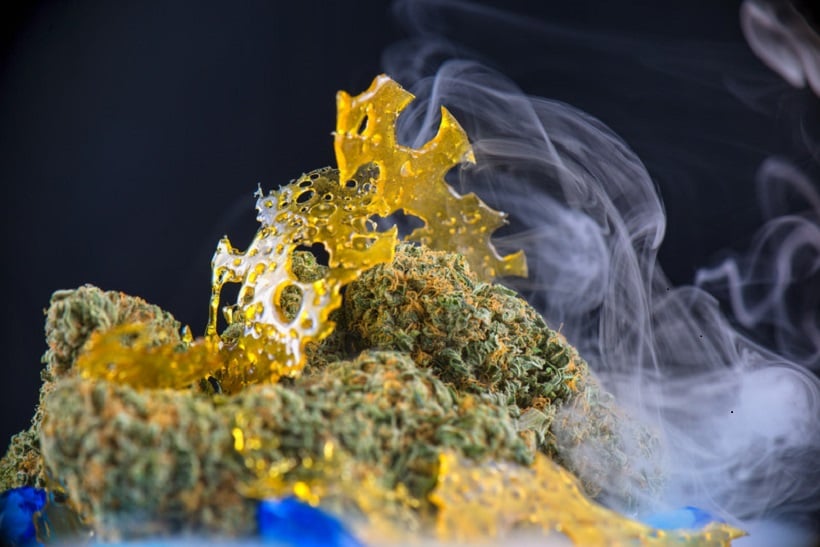
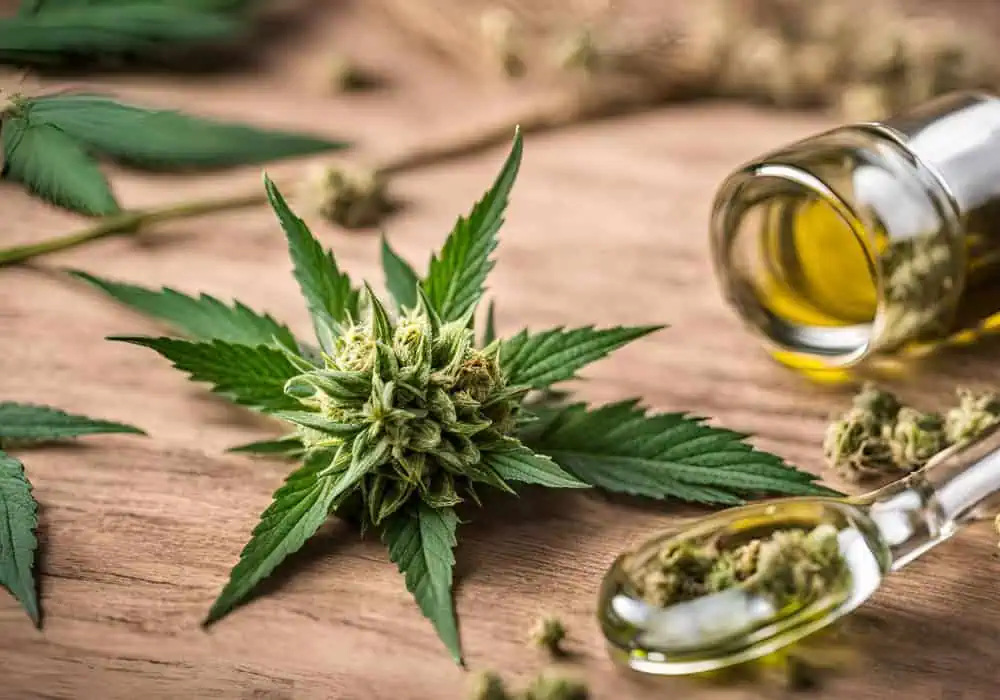


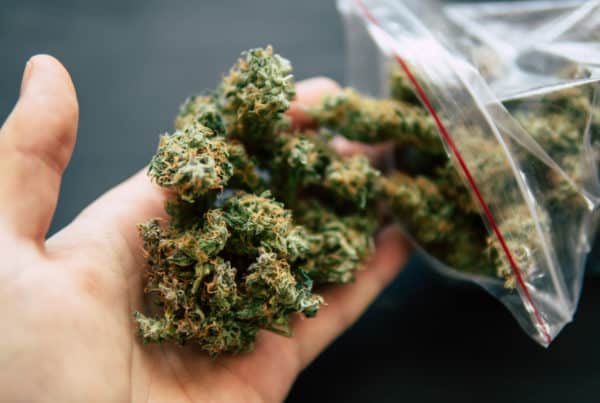
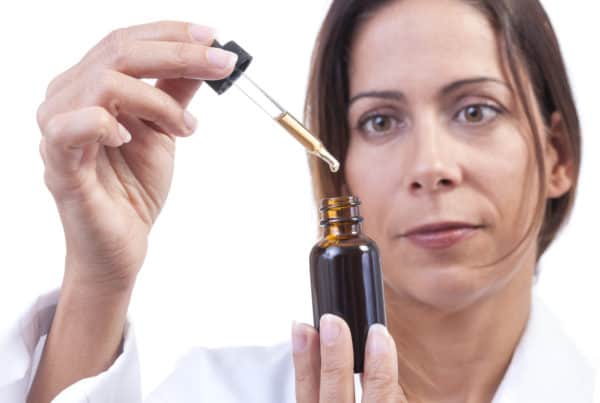
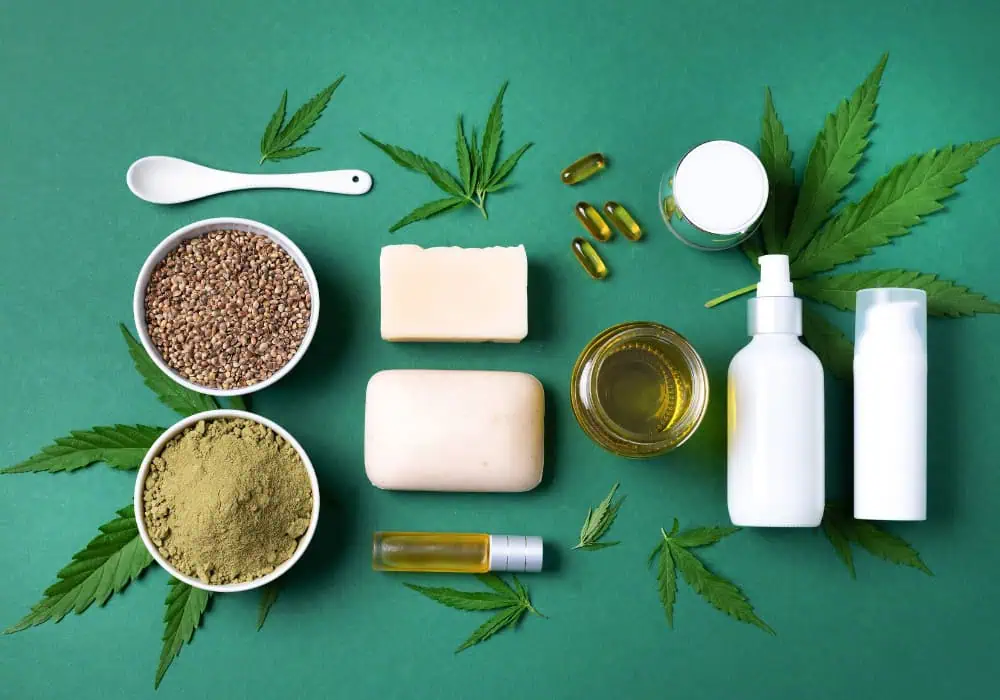

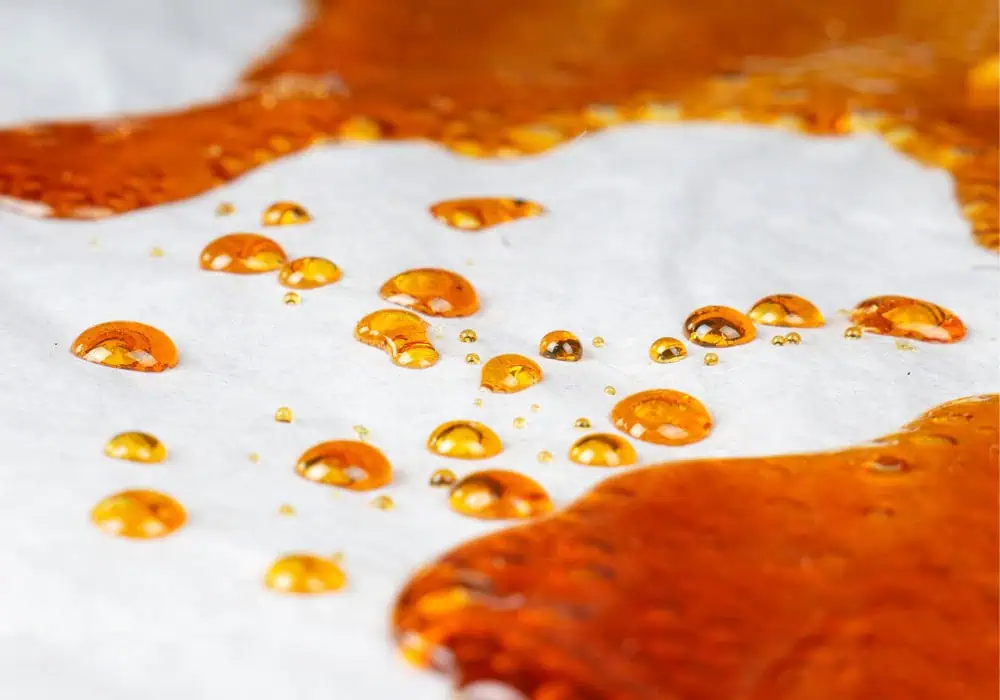

 Jeff was involved in an accident where he endured a traumatic brain injury. He had a week-long stay in ICU where brain surgeons
Jeff was involved in an accident where he endured a traumatic brain injury. He had a week-long stay in ICU where brain surgeons  100% risk free money back guarantee within 48 hours after purchase if student has not completed any of the courses or exams.
100% risk free money back guarantee within 48 hours after purchase if student has not completed any of the courses or exams.